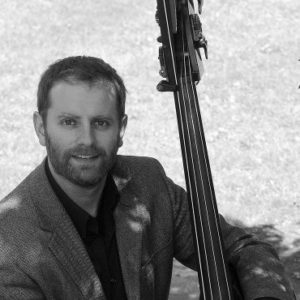 |
| Jazz Bassist Miles Brown |
For eight years, the jazz bassist
Miles Brown ran the jazz studies program at Oakland University. During that stretch
he also became a key figure on Detroit’s jazz scene, performing with heavies such as Sean Dobbin, Scott Gwinnell, and Mike Jellick.
Brown moved to Baltimore, but before the move, he gifted the scene with a
wonderful jazz album out last month on the Detroit Music Factory label
titled “Evidence of Soul and Body,” which since its debut has been on rotation on jazz
stations nationwide. Over the weekend, Brown officially celebrated the release
of the album with a four-night residency at Detroit’s Dirty Dog Jazz Café.
People hip to the album was able to experience the music – a mix of familiar
standards and originals from Miles’s pen and his dad’s guitarist Steve Brown –
live. The set Saturday evening and the recording have very similar feels. I
left the concert believing I’d made a smart choice investing a piece of my life
listening to an hour- plus of prime choice jazz. I felt the same after hearing to the album for the first time. Brown is a pristine bassist. When he
plays the bass, he doesn’t just lean it against his shoulder and pluck away at
the strings. He literally dances with the bass as if it’s a prom date. For the
project, he assembled equally gifted jazz musicians such as pianist Scott
Gwinnell, drummer Sean Dobbins, saxophonist Andrew Bishop, and guitarist Steve
Brown. The concert opened with the senior Brown’s “Two Birds One Stone,” a
modernized twist on the standard “Bye Bye Black Bird”. Brown simply infused the
standard with a hipper melody. It was a strong start to a concert that never
lost any momentum. Brown didn’t perform every cut on the album just the ones
that gave the album its charisma “Three and One,” ”Blues for Joaquin,” ‘Like
Dave,” and the closer “Sonny’s Hustle”. Every performance was a highpoint or a
mini-concert in itself. Brown’s dad Steve served up a handful of memorable
solos and his old-school elegance was the linchpin. Dobbins was colorful as
always with semi-automatic like rim shots, and Bishop displayed throughout the
concert world-class tenor play, the kind of cheek and bone blowing that
required years to perfect and that’s hard to come by these days. The four-night
celebration was a fitting way to formally introduce a bonafide jazz album to
the public.
No comments:
Post a Comment